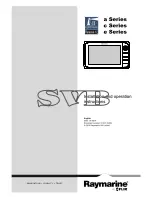
EN
11
2. Using a syringe insert 2ml of sterile water into the working channel port (if applying a
Luer Lock syringe use the enclosed introducer). Press the plunger, ensure that there are no
leaks, and that water is emitted from the distal tip.
5b
3. If applicable, prepare the suction equipment according to the supplier’s manual.
5c
Connect the suctioning tube to the suction connector and press the suction button to
check that suction is applied.
4. If applicable, verify that endoscopic accessory of appropriate size can be passed through
the working channel without resistance. The enclosed introducer can be used to facilitate
the insertion of soft accessories such as microbiology brushes.
5d
5. If applicable, verify that endotracheal tubes and double lumen tubes are compatible with
endoscope before starting the procedure.
6. Carefully connect the sampler bridge of the BronchoSampler with the aScope 4 Broncho,
by mounting the sampler bridge on the aScope 4 Broncho suction connector. Ensure a
tight fit.
5e
7. Press the attachment lock button to secure connection.
5f
8. Carefully connect the vacuum suction tubing to the suction connector according to the
supplier’s manual. If vacuum suction tubing has male connector, use the suction adapter
to ensure fit.
5g
9. Attach the sample container to the sampler bridge by joining the connection interfaces
and pressing the sample container towards the sampler bridge. Ensure the sample
container is clicked on. Do not use preservatives in the sample container.
5h
4.2. Operating the aScope 4 Broncho
Holding the aScope 4 Broncho and manipulating the tip 6a
The handle of the endoscope can be held in either hand. The hand that is not holding the
endoscope can be used to advance the insertion cord into the patient’s mouth or nose.
Use the thumb to move the control lever and the index finger to operate the suction button.
The control lever is used to flex and extend the distal tip of the endoscope in the vertical plan.
Moving the control lever downward will make the tip bend anteriorly (flexion). Moving it
upward will make the distal tip bend posteriorly (extension). The insertion cord should be held
as straight as possible at all times in order to secure an optimal distal tip bending angle.
Tube connection 6b
The tube connection can be used to mount ETT and DLT with an ISO connector
during intubation.
Insertion of the aScope 4 Broncho 7a
Lubricate the insertion cord with a medical grade lubricant when the endoscope is inserted
into the patient. If the camera image of the endoscope becomes unclear the distal tip can be
cleaned by gently rubbing the distal tip against the mucosal wall or remove the endoscope and
clean the tip. When inserting the endoscope orally, it is recommended to use a mouthpiece to
protect the endoscope from being damaged.
Instillation of fluids 7b
Fluids can be instilled through the working channel by inserting a syringe into the working
channel port at the top of the endoscope. When using a Luer Lock syringe, use the included
introducer. Insert the syringe completely into the working channel port or the introducer and
press the plunger to instill fluid. Make sure you do not apply suction during this process, as this
will direct the instilled fluids into the suction collection system. To ensure that all fluid has left
the channel, flush the channel with 2ml of air. It is recommended to remove introducer from
the working channel port when it is not in use.
Aspiration 7c
When a suction system is connected to the suction connector, suction can be applied by
pressing the suction button with the index finger. If the introducer and/or an endoscopic
accessory is placed inside the working channel note that the suction capability will be
reduced. For optimal suction capability it is recommended to remove the introducer or
syringe entirely during suction.
Summary of Contents for aScope 4 Broncho Large
Page 17: ...BG 17 5 4 6 6 4 1 7 8 9 10 11 12 13 14 15 16 17 18 19 20 21 22 23 Ambu Ambu 24...
Page 18: ...18 25 26 27 28 1 2 3 4 ETT 5 6 7 8 9 10 85 kPa 638 mmHg 11 1 5...
Page 21: ...BG 21 1 2 3 4 5 6 7 8 9 10 11 12 13 14 Luer Lock B 15 16 17 18...
Page 28: ...28 6 2 2...
Page 29: ...BG 29 aScope 4 Broncho aScope 4 Broncho...
Page 69: ...EL 69 5 4 6 6 4 1 7 8 9 10 11 12 13 14 15 16 17 18 19 20 21 22 23 Ambu Ambu 24...
Page 70: ...70 25 26 27 28 1 2 3 4 5 6 7 8 9 10 85 kPa 638 mmHg 11 1 5 1 6...
Page 73: ...EL 73 A aScope 4 Broncho 1 2 3 4 5 6 7 8 9 LED 10 11 12 13 14 Luer Lock B 15 flip top 16...
Page 80: ...80 6 2 2...
Page 81: ...EL 81 aScope 4 Broncho aScope 4 Broncho...
Page 180: ...180 aScope 4 Broncho aScope 4 Broncho...
Page 269: ...RU 269 5 4 6 6 4 1 7 8 9 10 11 12 13 14 15 16 17 18 19 20 21 22 23 Ambu Ambu...
Page 270: ...270 24 25 26 27 28 1 2 3 4 ETT 5 6 7 8 9 10 85 638 11 1 5...
Page 273: ...RU 273 1 2 3 4 5 6 7 8 9 10 11 12 13 14 B 15 16 17 18 C...
Page 280: ...280 6 2 2...
Page 281: ...RU 281 aScope 4 Broncho aScope 4 Broncho...
Page 339: ...ZH 339 6 2 2 aScope 4 Broncho aScope 4 Broncho...












































